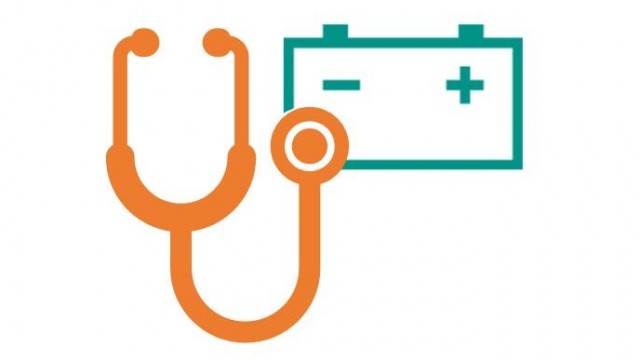How smart charging and vehicle to grid services will cut the cost of EVs
Published May 2017
What do you think of when I say electric vehicle?
Hopefully not a 1970s milk float, perhaps a Nissan LEAF or Tesla Model S?
Well here at Everoze when we think of an electric vehicle we don’t just think of a car, we think of a powerful battery, on wheels!
And pretty soon there are going to be millions of these mobile batteries, all connecting to the grid. This will drive radical change in our electricity system. For the Distribution Network Operators this is a daunting prospect – everybody comes home after work and plugs in their car to charge, overloading local networks. However here at Everoze we see the inevitable rise of EVs as an opportunity, not a threat. We understand the transformative power of batteries to deliver the flexible electricity system we need – with EVs central to this.
The primary means by which EVs can help balance the grid is through two interrelated concepts called ‘Smart Charging’ and ‘Vehicle to Grid’. This blog provides a quick introduction to both, highlights their value propositions and demonstrates that these concepts are not just pipe dreams – they are happening now.
Smart charging
Smart charging is where the time and rate at which the car is charged is varied in response to signals from the grid operator or electricity market. For instance, if electricity prices were high, you might want to stop charging until the prices dropped (akin to waiting until Uber peak pricing ends). It involves one way (or uni-directional) flow of electricity from the charger to the car. Although termed ‘smart’ charging, the technology is actually fairly simple – just a communications and control system to reduce or delay the charging of the car.
Smart charging acts to reduce demand on the grid at certain times and is therefore a form of demand response. It is mainly used to reduce peaks in demand (e.g. when everybody gets home from work and plugs in their electric vehicle) although could also be used to provide high frequency response (an increase in demand in response to an increase in system frequency). For an EV driver, smart charging can slow down the speed at which the car is charged, but provided you have sufficient time plugged in there will be no other impact on the car or the driving experience.
Vehicle to grid
Vehicle to grid is similar to smart charging but involves two-way flow of energy from and to the car. This means that if the electricity system was short on power (e.g. a nuclear power station drops offline suddenly), then the vehicle could provide power to the grid, helping balance the network. Under conventional usage, the only time an EV battery is discharged is when used to drive the vehicle. Under the V2G concept, driving (or mobility services) is just one of a range of services that can be provided. So instead of using the energy just to drive, you can also use it to help balance the network.
This means that under vehicle to grid an EV is an extremely flexible asset – as well as providing mobility it can undertake smart charging, reducing demand as required, and it can also export power. This means the car can target all the revenue streams stationary storage projects (such as those Everoze spend lots of time advising on) currently access. To illustrate this, assuming a long-term frequency response price at the upper end of the recent Enhanced Frequency Response tender, and a car plugged in for 65% of the time (with a beefy two-way charger), you could earn roughly £500/year – all while your car would have otherwise been sitting on the drive, doing nothing.
Vehicle to Grid is theoretically more valuable than smart charging, but also costlier, with the infrastructure required to allow two-way flow to and from the car quite expensive at present. It also involves coordinating with the car manufacturer – who wants to ensure that the battery doesn’t wear down or degrade too quickly – and you as the EV driver – who wants to be able to drive when you want to drive. Fortunately, these issues can be managed – as the volume of two-way chargers manufactured increases, cost will fall. Nissan have stated that battery degradation is not an issue for V2G* and a recent paper from Warwick University** stated that degradation was lower for V2G than for normal usage. In terms of convenience, simple apps will allow you as the driver to tap in when you need the car and how much battery you need to get home, allowing an aggregator or utility to then use the battery to earn revenue as you go about your day.
This is happening now
This may all sound a little far-fetched, but this is happening right now.
 This photo shows me pulling a really cheesy double-thumbs up next to an off-the-shelf Nissan LEAF helping balance the network in Aston, Birmingham. In the Netherlands, a fleet of 10 cars are providing services to the Dutch system operator, while in Denmark a car at an old people’s home is trading in the electricity market.
This photo shows me pulling a really cheesy double-thumbs up next to an off-the-shelf Nissan LEAF helping balance the network in Aston, Birmingham. In the Netherlands, a fleet of 10 cars are providing services to the Dutch system operator, while in Denmark a car at an old people’s home is trading in the electricity market.
The concept is proven – the technology works. The challenge is now to commercialise it and scale it up. This will not be easy – lots of different parties will need to come together but the potential benefit is significant and offers scope for cheaper EVs.
More on this in future blogs. In the meantime, please send any comments or views to contact@everoze.com
(My thanks to InnovateUK for supporting me to attend the recent V2G conference in Amsterdam)
* Presentation by Robbert Monteban, Nissan at V2G Conference, Amsterdam
** Uddin, Kotub, et al. “On the possibility of extended lifetime of lithium ion batteries through optimal V2G facilitated by an integrated vehicle and smart grid systems” Energy 2017







